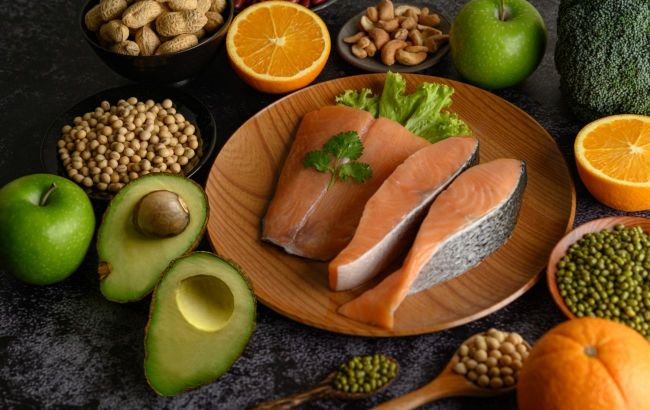Four foods with as many Omega-3 as salmon
 Which foods contain the same amount of Omega-3 as salmon (photo: Freepik)
Which foods contain the same amount of Omega-3 as salmon (photo: Freepik)
Omega-3 fatty acids are essential fats that play a crucial role in maintaining overall health. Since the body cannot produce these acids in sufficient amounts on its own, they must be obtained from food sources, the website Eating Well reports.
There are three main types of Omega-3 fatty acids: ALA (alpha-linolenic acid), found in plant-based sources, and DHA (docosahexaenoic acid) and EPA (eicosapentaenoic acid), which are primarily found in marine sources.
Dietitian Elana Natker explained that salmon is often referred to as a source of Omega-3 fatty acids, especially EPA and DHA, making it an excellent and tasty choice for increasing intake. An 85-gram serving contains approximately 1,800 milligrams of Omega-3 fatty acids.
However, there are other foods that contain even higher amounts of these essential fatty acids.
Walnuts
When it comes to Omega-3 fatty acids, walnuts are an incredible plant-based option that actually surpasses salmon in content.
Approximately 2,500 mg of ALA per serving. In fact, walnuts are the only tree nut that is an excellent source of Omega-3 fatty acids.
"You can literally grab a pack of walnuts and go!” This makes walnuts not only nutritious but also a convenient and adaptable choice for increasing your Omega-3 intake in your daily diet," added the dietitian.
Chia seeds
One serving contains approximately 5,000 mg of ALA Omega-3.
Chia seeds are a plant-based source of Omega-3 fatty acids, specifically ALA. According to dietitian Wendy Bazilian, chia seeds contain more Omega-3 per serving than salmon, although the type of acid differs.
Chia seeds can be easily incorporated into daily meals - sprinkled on yogurt, added to smoothies, or used to make chia pudding.
Mackerel
Mackerel provides 5,130 milligrams of Omega-3 fatty acids per 100-gram serving. This makes mackerel one of the richest natural sources of these essential fatty acids.
Fish is not only a nutrient-rich food but also a more cost-effective and environmentally friendly option compared to some other fish varieties. It has a rich flavor and can be grilled or baked.
Including mackerel in your diet not only increases Omega-3 intake but also adds variety to meals, making it easier to maintain a well-rounded and nutritious eating plan.
Herring
Another excellent source of Omega-3 fatty acids is herring - a versatile and flavorful fish that is often consumed pickled, smoked, or fresh, making it a staple in many cuisines worldwide.
Herring is also a source of antioxidants, such as vitamin E, which supports immune function and helps protect cells from oxidative damage.
Furthermore, herring is rich in vitamin D and selenium, further enhancing its status as a nutrient-dense food.
How many Omega-3 should you consume?
The recommended daily intake of Omega-3 fatty acids depends on the type and source. In general, adults should aim for:
- 1.1 grams per day for women
- 1.6 grams per day for men
This refers to ALA (alpha-linolenic acid), the plant-based omega-3 found in foods such as flaxseeds, chia seeds, and walnuts.
The recommended amount of Omega-3 may vary depending on specific health conditions or life stages, such as pregnancy or the treatment of certain diseases.
Read also about seven foods that contain vitamin K and ensure blood clotting.
Find out which magnesium supplements are the safest for human health.
This material is for informational purposes only and should not be used for medical diagnosis or self-treatment. Our goal is to provide readers with accurate information about symptoms, causes, and methods of detecting diseases. RBС-Ukraine is not responsible for any diagnoses that readers may make based on materials from the resource. We do not recommend self-treatment and advise consulting a doctor in case of any health concerns.

